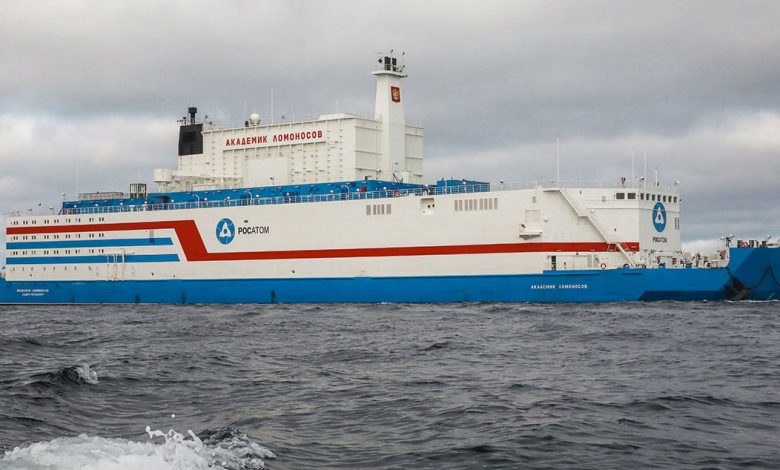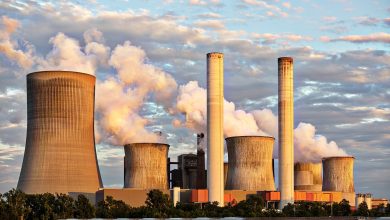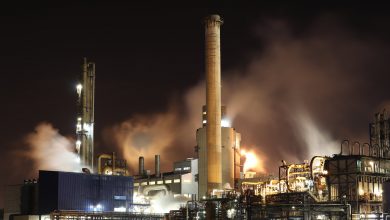Russia Goes Nuclear

In December 2019, Russia put its first floating nuclear power plant online. The boat-based facility, called Akademik Lomonosov, is in the North Pacific Ocean off the Chukotka tundra. It’s a relatively barren area, with roughly 50,000 residents within the whole state. The build replaces the outdated Bilibino nuclear power plant, which was built in 1974.
It has two KLT-40S nuclear fission reactors, which are used in Russian nuclear-powered icebreakers. The plant also consists of two steam turbine plants and a non-motorized barge. Akademik Lomonosov was completed 11 years after the start of construction by OKBM Afrikantov, a subsidiary of Rosatom.
In October 2019, Russia ratified the Paris Agreement, a collaborative effort by global governments to fight climate change. The push to nuclear energy also follows this and several major divestments in coal from Russian countries. Though not totally renewable, nuclear has always had a spot in Russian alternative energy policies. It would appear, though, that between concern for greenhouse gas emissions and the wavering private support in fossil energy, nuclear energy is coming out on top. In 2017, 19 percent of electricity production in Russia came from nuclear sources. The uranium-based energy was only second to natural gas. Natural gas is still the most prominent producer of electricity in Russia.

A Twist on Nuclear
Within the next year, the barge will connect to and heat the town of Pevek, a port in Chukotka. It’s home to about 5,000 people. In the long-run, the intent of the floating facility is to stimulate socio-economic development in Chukotka and to continue to further future energy goals of the country (Rapoza, 2019).
The two KTL-40S reactors can generate up to 70 megawatts of electricity, which is enough to supply energy to a city with a population of 100,000 people. Rosatom, the developer, is already working on a second-generation floating nuclear power plant. This project, called the Optimized Floating Power Unit, will be smaller than Akademik Lomonosov. It will be equipped with two RITM-200M reactors, each with the capability to generate 50 megawatts of electricity.
Akademik Lomonosov is the latest in a long history of nuclear developments in Russia. Dating as far back as the early 90s, the country has integrated nuclear power into its energy future, and subsequently, it’s economic future. In its energy strategy published in 1993, there are research funds and strategies to continue developing this energy source. This is all under the scrutiny of world skeptics.
This innovation follows a July 2019 a Russian nuclear accident that caused the death of 14 sailors. The seamen died of a fire on the nuclear submarine Losharik. Just a little over a month later, a nuclear missile test killed five scientists after it failed near the White Sea. These are only the most recent accidents that have caused criticism of Russia’s nuclear future. Though the floating nuclear plant will bring power to remote places of the country, its safety has drawn serious concerns.
The floating facility has raised health and safety concerns from environmental groups. However, developer Rosatom rejects these comments. The company says that the facility is safe, and assures doubters that it follows the International Atomic Energy Agency and Russian safety standards. Rosatom released a statement in May 2019 further addressing these concerns.
In the statement, the company claims that the ship “exceeds all possible threats and makes nuclear reactors invulnerable to … natural disasters.” The ship is (or soon will be) moored and secured to a special pier, according to Rosatom, and does not need motor functions in order to operate. There are also safety nets in the form of coastal structures and dams. These guards are meant to protect the ship from icebergs and tsunamis. Additional safety features include two separate systems to ensure the reactors “remain subcritical” in the event of an emergency (Boyd, 2019)
Akademik Lomonosov is one of several nuclear power projects stemming from Russia. Other new nuclear construction from Russian companies can be found in several countries in Africa. These include a $29-billion nuclear plant in Egypt, as well as projects in Nigeria, Uganda, and others (Proctor, 2019). The shift in energy development in this coal-producing country may be an indicator of much larger proportions.
Russia’s Long Nuclear History
Russia is a leading nuclear energy producer in the world. Its history with the controversial energy started in 1954 with the Obninsk reactor. It was the first nuclear power plant in the world to produce electricity, at about five megawatts. By the 1980s, Russia had 25 nuclear power reactors. The country slowed commissioning new nuclear power stations between 1986 ( the year of the Chernobyl accident) until late in the 1990s when it started exporting nuclear reactors to Iran, China, and India. During this time, it revived an in-state construction program.
In 2000, removing a hold from the 1990s, nuclear construction was brought back online. Rostov 1 was delayed in the previous decade and became the first of the delayed facilities to join the grid. Several years later, the government set goals to add two-to-three- gigawatts of electricity per year until 2030. It also pledged to ramp up exports to supply an anticipated 300-gigawatt demand for nuclear energy within the same timeframe (World Nuclear Association).
In 2007, construction began on the floating nuclear power plant. This innovative, water-based facility is based on a small modular reactor design. This nuclear fission reactor is smaller than its conventional counterparts. This is perhaps the beginning of what future technologies could look like in Russia’s nuclear power generation.
Now, Russia is a leader in not only fossil energy, but nuclear energy as well. It represents five percent of the total world nuclear market; 15 percent of the world reactor market; 45 percent of world uranium enrichment; and 8 percent of the world’s natural uranium. Russia has never shied away from the potential of nuclear energy. Instead, it has supported research and development to improve nuclear technologies and replace outdated utility servers. The floating nuclear power plant is expected to also close down coal plants in the near region.
Russia has been steadily expanding the role of nuclear energy within its power systems. In the future, the country has confirmed 20 new nuclear reactors as part of its initiative to amp up nuclear exports. In 2017, foreign orders for nuclear reactors, nuclear goods, and other services totaled $133 billion.
The Rosatom State Nuclear Energy Corporation, the company that built Akademik Lomonosov, is tasked with developing alternatives to fossil fuels. This is a responsibility that it is looking at domestically and within countries that it holds agreements with. The floating nuclear power plant is a new way to tackle the service of providing energy to consumers. Rosatom reported that it wants to build at least seven floating nuclear power plants. The state nuclear power company is currently working on its second generation of floating nuclear vessels, making them smaller and more powerful.
-

Photo Courtesy of the World Nuclear Association
Russia’s Nuclear Reactors
In 2010, the country felt a pressing demand for energy after years of stagnant need from consumers. Unlike its European and American counterparts, to keep up with demand and shifting global energy policies, Russia strongly supports nuclear energy efforts.
The country has about 36 active nuclear reactors that pump out about 29 gigawatts of electricity. Some of these technologies are nearly dated, having been commissioned in the 1970s. Three small reactors in Siberia are due to be decommissioned by 2022, a lifetime of more than 50 years. According to the World Nuclear Association, several of the reactor types (for example RBMK and VVER-440) have lifetime extensions of 15 years — VVER-1000 units have double that operating lifespan. Some Russian reactor technologies can even be used for up to 60 years.
Though there are many different types of units. These are some of the current models in use by nuclear energy generators.
VVER-1000, AES-92, AES-91 – VVER stands for water-cooled, water-moderated energy reactor. This is the main reactor design used throughout the sector. It is developed by OKB Gidropress in the 1980s. Its maximum burn up is 60 gigawatt-days per metric ton of uranium.
VVER-1200, AES-2006, MIR-120 – Developed by Rosatom, this unit has a longer operational lifetime and greater power and thermal efficiency than its earlier counterparts ( 34.8% net efficiency instead of 31.6%).
Starting in 2020 through 2025, though, Russia looks to increase the role of fast neutron power reactors as part of its nuclear energy production. These types of reactors are different in the way they recycle fuel. This is on the country’s list of todos for innovative nuclear power, in addition to balancing the input from thermal and fast reactors. Currently, the Russian nuclear sector sees about 100 tons per year of fission waste go into a repository. The country would like to eliminate this waste. It looks to level off nuclear generation to equal 100 tonnes per every 100 gigawatts.
Shifting Stance on Coal
Russia is energy independent, as its vast lands hold an abundance of various fuel-producing material. It is the largest producer of crude oil and is home to the second-largest coal reserve in the world. (Its coal reserves could be extracted for hundreds of years. These underground mines represent 19 percent of the world’s total reserves. But its yielding potential doesn’t stop there. It is also the fifth-largest annual producer of coal and holds 12 percent of the thermal coal trade.
In its energy strategy, released by the Ministry of Energy, goals were set to increase coal power generation, increase natural gas exports, and expand the capacity to hold coal in Russian ports. In 2010, the country picked up some steam on the first goal. It produced 323.4 million tons of coal that year and has continued to increase production (Oil Price).
However, come 2016, coal production shifted. Experts refer to it as the turning point in the history of coal production. Around this time, a call to action was brought against coal power generation by the Califonia insurance commissioner’s office. The state’s commissioner called on all insurance companies to stop investing in the industry. From then on, many financial companies abandoned coal-sourced electricity, and coal plants shut started shutting down. This, according to a Russian environmental group, sparked an international shift.
Now, IrkutskEnergo, a Russian energy company, might sell its coal assets as one possible option to strengthen the future of the company. This sale — to the tune of $388 million — would shift IrkutskEnergo’s portfolio to almost exclusively hydropower.
The company is calling the sale a push to minimize carbon emissions as it is also trying to sell off six open-pit mines in western Siberia. But it may be a sign of trouble in the coal industry. Altogether these sites produce about 15 million tons of coal, which only represents 1.7 percent of the company’s total income. The company is part of the EN+ group. In a report called the International Financial Reporting Standards, En + reported the intent to conduct an analysis of strategies for coal and energy assets in the Irkutsk region “as part of the commitment to minimize carbon dioxide emissions.”
Similarly, Enel Russia, controlled by the Italian Enel, should close the deal on the sale of the Reftinskaya power station by the end of 2020. The company has been trying to sell the coal plant since 2016; it is the Enel Russia’s largest asset. Regardless, this move to abandon coal generation cleans its portfolio and increases its possibility in alternative energy generation.
Natural gas, on the other hand, is a different story. The country is still seeing millions of dollars go to funding domestic and international projects. For example, Gazprom, a state-controlled natural gas company, is pushing development in natural gas. In the near future, it loorel=”nofollow” target=”_blank”ks to expand its already far pipeline territory with the Turkish Stream and the Nord Stream II.
Sources
Kenneth Rapoza (2019). “Russia’s First Floating Nuclear Power Plant Turns On, Set To Replace Coal” Forbes
Charles Digges (2019). “Russian energy giant looks to shed coal assets, reports say” Bellona
Olga Podosenova (2019). “Russian companies begin to turn away from coal” Bellona
https://bellona.ru/2019/11/29/rossijskie-kompanii-nachinayut-otvorachivatsya-ot-uglya/
John Boyd (2019). “Is the World Ready for Floating Nuclear Power Stations?” IEEE Spectrum
Duke Energy. “How Energy Works: Nuclear Energy”
https://www.duke-energy.com/energy-education/how-energy-works/nuclear-power
Darrell Proctor (2019). “Russia Offers to Expand Nuclear Power in Africa” Power Magazine
https://www.powermag.com/russia-offers-to-expand-nuclear-power-in-africa/
World Nuclear Association (2019). “Nuclear Power in Russia”
Oil Price. “Russian Coal Fights For Survival” https://oilprice.com/Energy/Energy-General/Russian-Coal-Fights-For-Survival.html
Kenneth Rapoza (2019). “Russia’s Gazprom Is Investing More In Oil & Gas Worldwide Than Rival Exxon” Forbes



